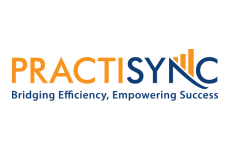
The Most Overlooked Cause of Neck Pain

Recent research has reaffirmed that weakness of one cervical muscle group is closely tied to chronic neck pain. This unit is also implicated as a provocative factor for cervical radiculopathy, cervicogenic headache, and cervicogenic vertigo. Do you know the answer? Check out this synopsis to learn which muscle it is, plus specific strategies to quantifiably test and strengthen it.
Problem: Deep neck flexor weakness

The deep neck flexors include four muscles that lie behind the trachea on the front of the cervical spine. The group includes the longus colli, longus capitis, rectus capitis, and longus cervicis. Due to their proximity to the spine and their short length, the muscles are primary stabilizers of the cervical spine.
A 2020 JMPT study reaffirmed that weakness of the deep neck flexors is common in cervical radiculopathy patients:
“Current results confirmed the presence of cervical multifidus and longus colli muscle atrophy in subjects with chronic radicular neck pain.” (1)
Prior research concluded that cervicogenic headache patients also demonstrate a loss of strength in the deep neck flexors, with over-activation of the SCM and upper trapezius. (2,3)
Assessment: Deep neck flexor endurance test
The Deep neck flexor endurance test is a maneuver for assessing the suspect muscles. This chiropractic assessment starts with the patient in a supine, hook-lying position. The patient performs chin retraction, then actively lifts the head an inch off of the table. The clinician places their flat hand on the table below the patient’s occiput. If the patient’s head begins to lower or their anterior neck skin folds separate, they are reminded to “tuck your chin and hold your head up.”
The test is timed until the patient’s head touches the clinician’s hand for more than one second. The average endurance for men is about 40 seconds and 30 seconds for women. Those with neck pain average closer to 20 seconds. Low endurance suggests neck flexor weakness with a predisposition to over-utilize the SCM, platysma, and hyoid- resulting in an upper crossed posture and neck pain. (4,5)

Treatment: Deep neck flexor strengthening
Strengthening the cervical stabilizers can help improve neck posture, pain, and function. The Deep neck flexion exercise is a useful tool for improving neck stability. This exercise essentially asks the patient to go home and practice the aforementioned assessment.
While lying supine, the patient performs a “chin tuck” by retracting their head to create a double chin. The patient then lifts their head, bringing their chin toward their chest without lifting their shoulders, as though they are looking at their toes. The patient holds this position for 3-4 seconds, then lowers their head and repeats as directed for three sets of ten repetitions daily.

Outcomes: Exercise & manipulation
One recent trial of chronic neck pain patients compared the utility of exercise vs. manual therapy (upper thoracic manipulation and upper cervical mobilization) and concluded:
“There are no differences between groups in short and medium terms. Manual therapy achieves a faster reduction in pain perception than therapeutic exercise. Therapeutic exercise reduces disability faster than manual therapy.” (6)
The authors concluded that when used in isolation, manipulation provides faster pain relief, while exercise enhances function more expediently. Fortunately, evidence-based chiropractors are not limited to a single tool. Effectively managing spinal problems requires a comprehensive strategy that typically includes manipulation combined with the most appropriate chiropractic exercise protocol.
References
- Amiri-Arimi S, Bandpei MA, Rezasoltani A, Javanshir K, Biglarian A. Asymmetry of Cervical Multifidus and Longus Colli Muscles Size in Participants With and Without Cervical Radicular Pain. Journal of Manipulative and Physiological Therapeutics. 2020 Mar 1;43(3):206-11. Link
- Page P., Frank C.C., Lardner R., Assessment and treatment of muscle imbalance: The Janda Approach 2010, Champaign, IL: Human Kinetics.
- Falla DL, Jull GA, Hodges PW. Patients with neck pain demonstrate reduced electromyographic activity of the deep cervical flexor muscles during performance of the craniocervical flexion test. Spine. 2004 Oct 1;29(19):2108-14. Link
- Domenech MA, Sizer PS, Dedrick GS, McGalliard MK, Brismee JM. The deep neck flexor endurance test: normative data scores in healthy adults. PM&R. 2011 Feb 1;3(2):105-10. Link
- Harris KD, Heer DM, Roy TC, Santos DM, Whitman JM, Wainner RS. Reliability of a measurement of neck flexor muscle endurance. Physical therapy. 2005 Dec 1;85(12):1349-55. Link
- Bernal-Utrera C, Gonzalez-Gerez JJ, Anarte-Lazo E, Rodriguez-Blanco C. Manual therapy versus therapeutic exercise in non-specific chronic neck pain: a randomized controlled trial. Trials. 2020 Dec;21(1):1-0. Link
















